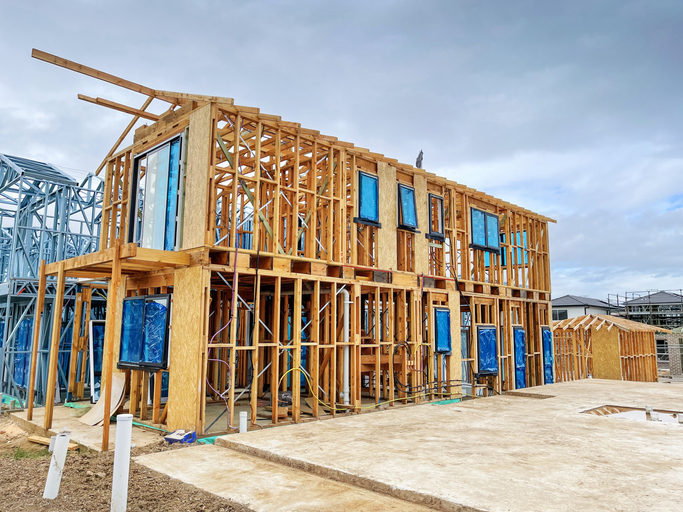Australian construction costs continue to go up – and up
Victoria has been worst hit by rising prices over the past year, with no end in sight
National construction costs are continuing to climb at record rates, CoreLogic reports.
The Cordell Construction Cost Index showed residential construction costs increased by 11 percent over the 12 months to September 2022 across the country, compared with a 10 percent rise recorded over the past 12 month to June this year.
The rising costs, especially for timber and metals, were impacting on structural stages of housing construction, such as framing and reinforcing, CoreLogic construction cost estimation manager, John Bennett said.
“This quarter has also shown a larger increase in the cost of wall linings, including plasterboard and fibre cement, which previously had been relatively stable,” he said. “It will cost you more to get into your house too, with the price of doors showing a sharp rise in the last quarter.”
Queensland was the worst affected state this quarter, recording a 5.8 percent increase, followed by Victoria at 5.6 percent and NSW at 4 percent. Western Australia saw the lowest quarterly increase at 3.3 percent.
Victoria has experienced the highest rise in construction costs over the past 12 months, recording a 12.3 percent increase to September this year.
CoreLogic research director Tim Lawless said there was no easy answer to the pressures of rising material costs and the COVID-related backlog of residential construction that is still apparent. Recent weather events, and the subsequent damage to homes that now required repairs, would only add to the squeeze on resources in the building industry, he said.
“There’s no quick solution for providing additional materials and fuel costs remain elevated. All of these factors have an impact and are likely to push building costs higher for some time yet,” Mr Lawless said.
“Persistently high construction costs are clearly adding to inflationary pressures as well, with the price of new dwellings one of the most significant contributors to the June quarter inflation reading.”
This stylish family home combines a classic palette and finishes with a flexible floorplan
Just 55 minutes from Sydney, make this your creative getaway located in the majestic Hawkesbury region.
A Sydney site with a questionable past is reborn as a luxe residential environment ideal for indulging in dining out
Long-term Sydney residents always had handful of not-so-glamourous nicknames for the building on the corner of Cleveland and Baptist Streets straddling Redfern and Surry Hills, but after a modern rebirth that’s all changed.
Once known as “Murder Mall” or “Methadone Mall”, the 1960s-built Surry Hills Shopping Centre was a magnet for colourful characters and questionable behaviour. Today, however, a $500 million facelift of the site — alongside a slow and steady gentrification of the two neighbouring suburbs — the prime corner property has been transformed into a luxury apartment complex Surry Hills Village by developer Toga Group.
The crowning feature of the 122-apartment project is the three-bedroom penthouse, fully completed and just released to market with a $7.5 million price guide.
Measuring 211sqm of internal space, with a 136sqm terrace complete with landscaping, the penthouse is the brand new brainchild of Surry Hills local Adam Haddow, director of architecture at award-winning firm SJB.
Victoria Judge, senior associate and co-interior design lead at SJB says Surry Hills Village sets a new residential benchmark for the southern end of Surry Hills.
“The residential offering is well-appointed, confident, luxe and bohemian. Smart enough to know what makes good living, and cool enough to hold its own amongst design-centric Surry Hills.”
Allan Vidor, managing director of Toga Group, adds that the penthouse is the quintessential jewel in the crown of Surry Hills Village.
“Bringing together a distinct design that draws on the beauty and vibrancy of Sydney; grand spaces and the finest finishes across a significant footprint, located only a stone’s throw away from the exciting cultural hub of Crown St and Surry Hills.”
Created to maximise views of the city skyline and parkland, the top floor apartment has a practical layout including a wide private lobby leading to the main living room, a sleek kitchen featuring Pietra Verde marble and a concealed butler’s pantry Sub-Zero Wolf appliances, full-height Aspen elm joinery panels hiding storage throughout, flamed Saville stone flooring, a powder room, and two car spaces with a personal EV.
All three bedrooms have large wardrobes and ensuites with bathrooms fittings such as freestanding baths, artisan penny tiles, emerald marble surfaces and brushed-nickel accents.
Additional features of the entertainer’s home include leather-bound joinery doors opening to a full wet bar with Sub-Zero wine fridge and Sub-Zero Wolf barbecue.
The Surry Hills Village precinct will open in stages until autumn next year and once complete, Wunderlich Lane will be home to a collection of 25 restaurants and bars plus wellness and boutique retail. The EVE Hotel Sydney will open later in 2024, offering guests an immersive experience in the precinct’s art, culture, and culinary offerings.
The Surry Hills Village penthouse on Baptist is now finished and ready to move into with marketing through Toga Group and inquiries to 1800 554 556.
This stylish family home combines a classic palette and finishes with a flexible floorplan
Just 55 minutes from Sydney, make this your creative getaway located in the majestic Hawkesbury region.























